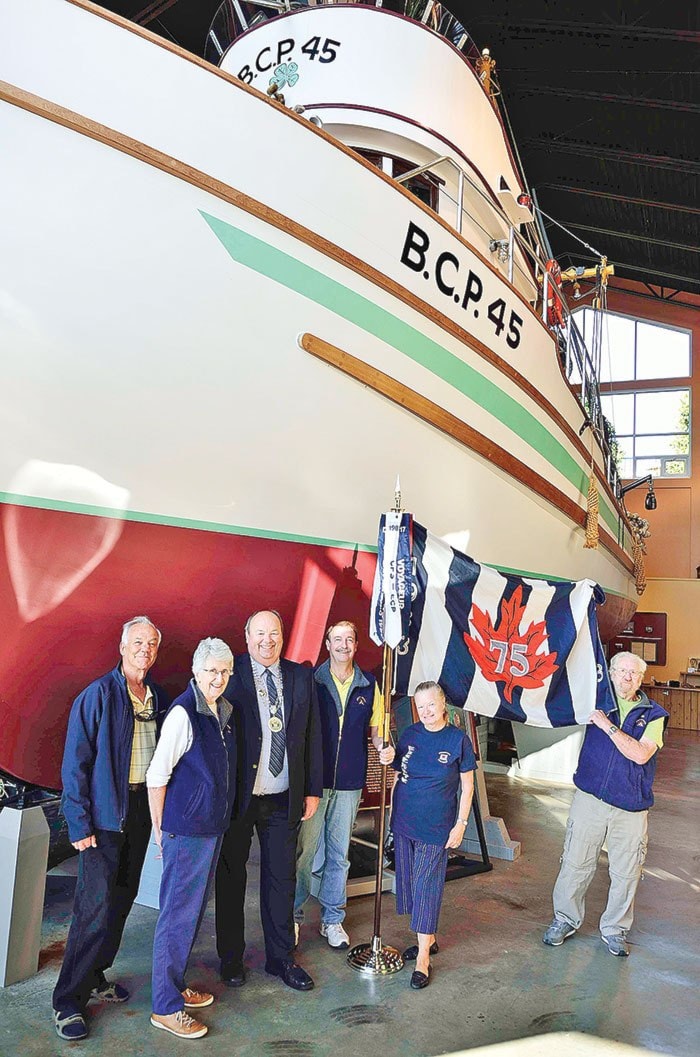This year the Canadian Power and Sail Squadrons (CPS) is celebrating its 75th anniversary.
Two anniversary flags are making a relay across Canada, one to the east and into the Atlantic and another to the west and into the Pacific. Both flags started their journey in Windsor, Ont. and are being passed from one squadron to the next.
On Sept. 17, the western flag arrived on Vancouver Island at the Little River BC Ferries terminal. It flew atop the mast of the BC Ferries vessel Queen of Burnaby, next to the BC Ferries flag.
Once on the Island it will be waved by each squadron in turn travelling from north south via Campbell River, Comox Valley, Parksville, Port Alberni, Nanaimo, Gabriola Island, Ladysmith and Cowichan before moving to Salt Spring Island.
Each local squadron will celebrate the presence of the flag in their town with their own local events. In Campbell River, Mayor Walter Jakeway welcomed the flag at city hall and posed with it for pictures on the Campbell River waterfront.
The westerly flag will eventually be dipped in the Pacific near Sooke. After their soaking, it and the eastern flag will be dried and taken to Toronto and will form the centrepiece of the CPS 75th conference and AGM.
One flag will then be given to colleagues in United States Power Squadrons and take part in their 100th anniversary celebrations.
CPS is known nationally as the premier organization teaching safe boating. CPS was founded in the summer of 1938 by boaters who went from Windsor across the border to Detroit and took courses from their colleagues in the United States Power Squadron.
They realized that Canada needed a similar safe boating teaching organization and founded CPS. CPS is a nationally-registered not-for-profit corporation with 26,000 members. Canada’s 165 squadrons form larger units called districts. The Vancouver Island North District covers the Island from the Malahat to the north of the Island, while the Vancouver Island South District covers the Gulf Island and the Capital Region. These local squadrons teach courses ranging from how to tie knots, how to anchor safely, how to read the weather to how to navigate safely offshore using GPS and celestial navigation. Squadrons delve much deeper than just the basic pleasure craft operators requirements, although they teach that as well.
